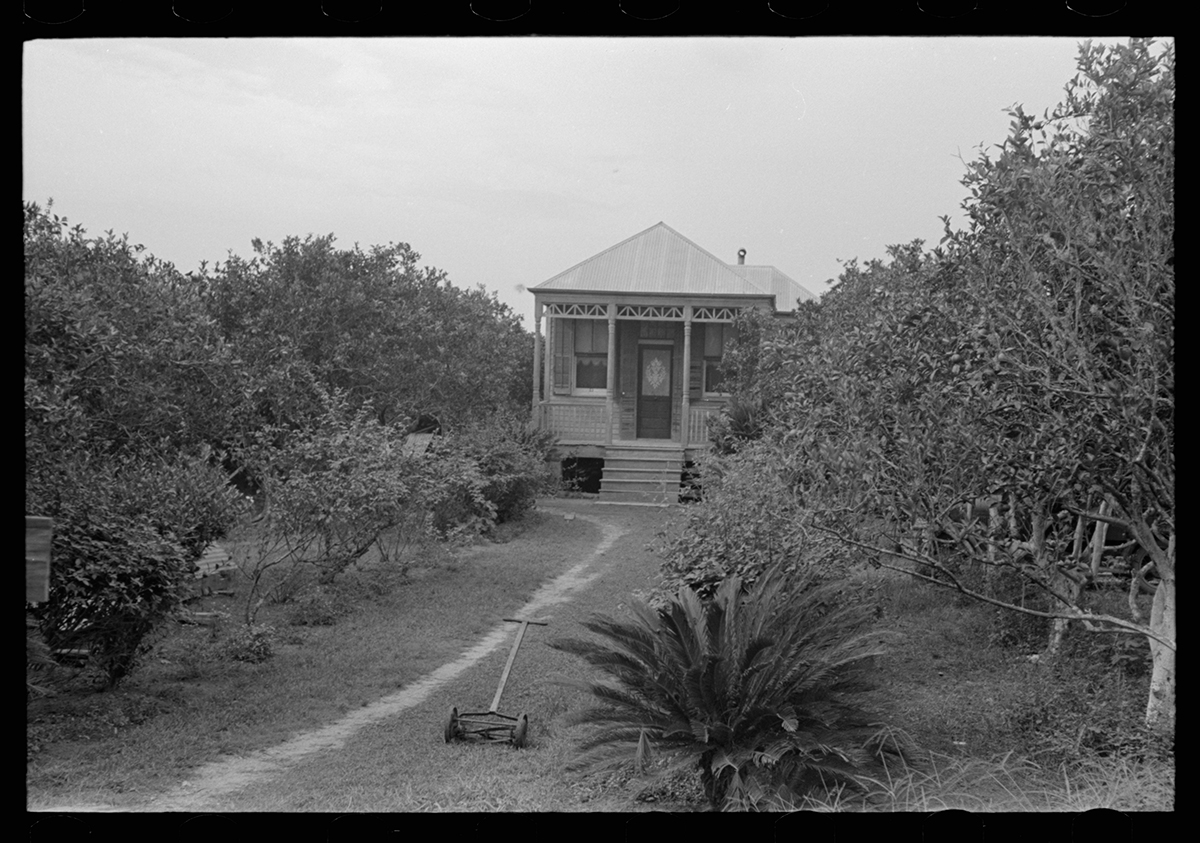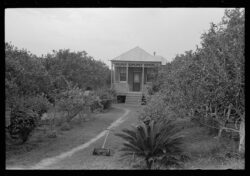Citrus Industry
Louisiana’s citrus industry traces its origins to the early 1700s, but the effects of climate change increasingly threaten its long-term viability.

Library of Congress
Front yard of orange grower in Boothville, 1938. Russell Lee, photographer.
Louisiana boasts one of the oldest citrus-growing traditions in the country, a three-hundred-year history imbuing local varietals with cultural significance far beyond the state’s modest annual yield. Centered in Plaquemines Parish, the citrus industry traces its origins to the early 1700s when Father Paul du Ru, chaplain for the second Louisiana expedition of Pierre Le Moyne d’Iberville, planted orange seeds at Fort De La Boulaye, roughly thirty-five miles south of New Orleans. While his efforts proved unsuccessful, French ethnographer Antoine Simon Le Page du Pratz recalled from his stay in the city nearly three decades later, “The orange-trees and citron-trees . . . have succeeded extremely well.” Soon small-scale citrus production reached toward the Gulf of Mexico on both sides of the Mississippi River.
Yet, as late as the 1820s, the state imported large quantities of oranges from foreign ports such as Havana. Louisiana became an independent producer over the next two decades, with steamboats carrying crates of homegrown citrus to markets upriver. The Mediterranean mandarin, introduced by the Italian consul in the 1850s, diversified the industry, and, following the Civil War, the state’s fertile growing region south of New Orleans became known as the “orange belt.”
Today’s popular Citrus unshiu came to Louisiana in the 1880s from Japan, the cultivar taking its common name from the island nation’s historical Satsuma province. As horticulturist James D. Spiers has documented in “History of Gulf Coast Citrus,” producers initially marketed the easy-to-peel fruit as a “kid-glove orange” for the purported ability of ladies to eat one without soiling their covered hands. included the small, sweet varietal alongside oranges, tangerines, and kumquats. As new drainage systems reclaimed swaths of marshlands once dedicated to rice and sugarcane, Louisiana growers expanded production, reaching an apex in the mid-1940s.
From periodic freezes to insects and diseases, the industry has long endured setbacks. However, the effects of climate change increasingly threaten its long-term viability. Stronger, more frequent hurricanes in the last two decades have repeatedly destroyed upwards of 80 percent of crops—the unfortunate coincidence of harvest and storm seasons in the late fall leaving bushels of heavy ripe fruit rotting on the ground. As state researchers experiment with containerized, protected growing systems, the Louisiana citrus industry, today focused on navel oranges and satsumas, hopes to position itself for future centuries.
